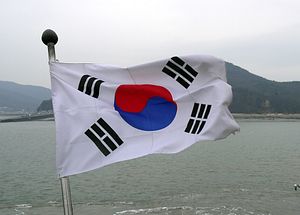It has been 25 years since China and South Korea established diplomatic relations in the embers of the Cold War, despite obvious differences in their ideologies and political values. Symbolically, China-South Korea relations might have been regarded as a model in China’s relations with its neighboring countries: a certain level of political trust, highly complementary economies, and massive civil exchanges. There once were over 1,200 flights between China and South Korea, representing almost 30 percent of all overseas flights in the South Korean civil aviation market.
But the relationship seems to have been suffocated by South Korea’s decision to deploy the U.S. THAAD missile defense system in its territory, after North Korea’s provocative nuclear tests and missile launches in previous months. Consequently, the number of Chinese tourists bound for South Korea has significantly dropped in the past few months, indicating a change in South Korea’s image among the Chinese public.
In a spring 2017 Pew survey, only 34 percent of the South Koreans in the poll viewed China favorably; 61 percent viewed China favorably in spring 2015, before the deployment of THAAD started to emerge as a critical issue between Seoul and Beijing. The drop, of course, synchronizes with the political alienation between China and South Korea more recently. It seems that new estrangements have been created as the result of preexisting ones that have never really disappeared, and this is the true diplomatic complexity of Northeast Asia.
It is inappropriate to say that there have not been enough civil exchanges between China and South Korea in the past, as public diplomacy has long been an area of political consensus between the two governments. There have been numerous visits, conferences, forums, and exchange programs among scholars, the young generation and the general public from both sides. The problem is that once there is a critical issue: with the deployment of the THAAD system, civil exchanges, and public diplomacy may easily be held up, if not completely stopped. Hence, if there is something wrong with current China-South Korea relations, public diplomacy — which should be the common ground on which a normal and benign relationship develops — is nevertheless not necessarily a timely panacea for all problems.
Meanwhile, it is equally inappropriate to underestimate the importance of constant civil exchanges. In a recent KBS (Korean Broadcasting System) TV program that marked the 25th anniversary of the establishment of South Korea-China diplomatic relations, special guests and the audience all expressed their concerns about the current state of affairs, but looked forward to improvements. Moreover, all agreed on the importance of public communications including cultural exchanges, economic cooperation, and so on.
Yet, this is not the key to unlocking the current barrier between China and South Korea. In the big picture, the crux of the Northeast Asian security situation primarily lies in an ongoing “powerplay” in the region, which Victor Cha has described as America’s construction of an asymmetric alliance system designed to exert maximum control over the smaller ally’s actions. The final decision about THAAD deployment is a product of such “powerplay” politics, which inevitably inspire China’s deep concerns. At a strategic and political level, should South Korea continue to play a critical role in the U.S.-dominated regional “powerplay” and become more dependent on U.S. strategic interests, the future of China-South Korea relations and overall regional security will remain unclear and unstable.

































